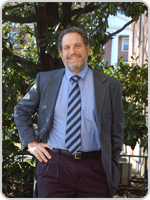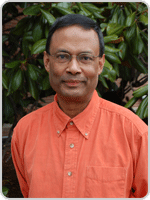|  
Sankar Das Sarma (left) and Jordan Goodman (right) have been selected to receive CMNS Board of Visitors Awards, established and funded by the Board to acknowledge the accomplishments of our faculty and students. Professor Das Sarma, the Richard E. Prange Chair in Physics, is a Distinguished University Professor, a fellow of the Joint Quantum Institute, and the director of the Condensed Matter Theory Center. He will receive the Distinguished Faculty Award in recognition of his stellar career and of recent achievements in topological qubits and predictions of Majorana fermions in superconductors. In 2008, he won the Kirwan Faculty Research Prize for his groundbreaking work in quantum computing, particularly interactions of quasiparticles that--at a few millionths of a degree above absolute zero and in the presence of a strong magnetic field--create patterns that could allow nearly error-free computing of immense speed and capacity. Professor Goodman will receive the Board of Visitors Creative Educator Award, in recognition of his long contributions to our education mission and his innovative spirit in developing new courses. Most recently, he conceived of an advanced honors seminar that would blend science, technology, and public policy; it was first offered this fall as HONR378N, Research in Science and Public Policy for the U.S. National Security Agency. He is a Distinguished Scholar-Teacher, a college Distinguished Alumnus, a recipient of the Kirwan Undergraduate Education Award and the UMD President's Medal. A particle astrophysicist, he is the Principal Investigator for the HAWC Gamma Ray Observatory in Santa Negra, Mexico. He currently chairs the University Research Council. The 2013 CMNS Board of Visitors Awards will be presented at this year's Academic Festival. At that event, other CMNS Awards will be given, including the 2013 Outstanding Teaching Assistant Award to Rashmish Mishra, a graduate student in the Maryland Center for Theoretical Physics. Please attend the Academic Festival on May 10, 2013 at 2:00 p.m. in the G. Forrest Woods Atrium of the Chemistry Building. | |


